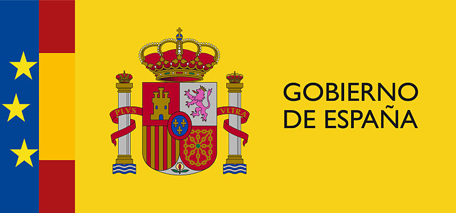|
|
|
|
|
|
|
|
|
|
|
|
1. TAMAÑO DEL CAMPO:
El campo de juego es un rectángulo de dimensiones 28 m x 15 m medidos desde el borde interior de las líneas que lo delimitan, tanto para competiciones internacionales y nacionales como para los campos de nueva construcción.
La Federación Española de Baloncesto podrá aprobar otros campos con dimensiones mínimas de 26 m x 14 m
2. BANDAS EXTERIORES:
Alrededor del campo de juego habrá un espacio de 2 m de anchura libre de obstáculos.
3. TRAZADO DEL CAMPO:
El trazado del campo será conforme con las figuras:
Las líneas de marcas tendrán 5 cm de anchura y serán todas del mismo color preferentemente blanco.
Todas las líneas forman parte de la superficie que delimitan, excepto las líneas perimetrales que son exteriores.
4. ALTURA LIBRE DE OBSTÁCULOS:
Será de 7 m como mínimo sobre el campo y las bandas exteriores.
5. ORIENTACIÓN:
El eje longitudinal del campo en instalaciones al aire libre será N-S admitiéndose una variación comprendida entre N-NE y N-NO.
6. ILUMINACIÓN:
La iluminación artificial será uniforme y de manera que no dificulte la visión de los jugadores, del equipo arbitral ni de los espectadores. Cumplirá la norma UNE-EN 12193 "Iluminación de instalaciones deportivas" y contará con los siguientes niveles mínimos de iluminación:
| NIVELES MÍNIMOS DE ILUMINACIÓN (interior) |
Iluminancia horizontal E med (lux) |
Uniformidad E min/E med |
|---|---|---|
| Competiciones internacionales FIBA nivel 1 y 2 (I) | 1.500 | 0,7 |
| Competiciones internacionales y nacionales | 750 | 0,7 |
| Competiciones regionales, entrenamiento alto nivel | 500 | 0,7 |
| Competiciones locales, entrenamiento, uso escolar y recreativo | 200 |
0,5 |
(I) medido a 1,50 m sobre la zona de juego
Las luminarias no deben colocarse en la parte del techo correspondiente a un circulo de 4 m alrededor de la canasta para evitar deslumbramientos.
Para retransmisiones de TV color y grabación de películas se requiere un nivel de iluminancia vertical de al menos 800 lux, no obstante este valor puede aumentar con la distancia de la cámara al objeto. Para mayor información debe consultarse la norma citada.
(exterior) |
E med (lux |
E min/E med |
|---|---|---|
| Competiciones internacionales y nacionales | 500 | 0,7 |
| Competiciones regionales, entrenamiento alto nivel | 200 | 0,6 |
| Competiciones locales, entrenamiento, uso escolar y recreativo | 75 | 0,5 |
7. PAVIMENTO DEPORTIVO:
Son aptos los pavimentos de madera o sintéticos. Los pavimentos rígidos no son recomendables. Se dispondrá como mínimo con el siguiente criterio:
- De madera fijo o desmontable para competiciones de alto nivel FIBA y nacionales.
- Sintético fijo o desmontable para competiciones no incluidas en las anteriores, para entrenamiento y uso escolar y recreativo. El pavimento deportivo cumplirá los siguientes requisitos de acuerdo con el Informe UNE 41958 IN "Pavimentos deportivos": Requisitos:
Absorción impactos (Reducción de fuerza) |
RF³50% RF³35% RF³20% | Competiciones ámbito internacional y nacional Competiciones ámbito regional Ambito local, recreativo, escolar |
Deformación |
StV£3mm StV£5mm | Sintético Madera |
| Fricción | 0,4 £ m £0,8 | |
| Planeidad | Diferencias de nivel inferiores a 3 mm medidos con regla de 3 m (1/1000) | |
| Bote de balón | ³90% respecto a la altura de bote en suelo rígido | |
| Resistencia a impactos | Sin fisuras, grietas o deformaciones mayores de 0,5 mm para impactos de 8 Nm | |
| Resistencia a huella | Sin fisuras, grietas o deformaciones mayores de 0,5 mm a las 24 h. de realizar el ensayo | |
| Cargas rodantes | Sin fisuras, grietas o deformaciones mayores de 0,5 mm para cargas de 1500 N (madera) o para carga de 1000 N (sintético) | |
| Resistencia a abrasión | Máxima perdida de peso: 3 g por 1000 revoluciones (sintético) | |
| Espesores | Verificación del espesor o espesores de las capas, ofrecidos por el fabricante o instalador, de acuerdo con la norma UNE EN 1969 | |
| Resistencia al fuego | M3 (UNE 23727) |
La FIBA exige que el pavimento deportivo cumpla la norma alemana DIN 18032-2 Para pistas exteriores además de los anteriores cumplirán los siguientes requisitos:
| Pendientes de evacuación | Transversal y máxima del 1% |
| Resistencia a tracción (sintéticos) | ³ 400 KPa |
| Alargamiento de rotura (sintéticos) | ³ 40 % |
| Drenaje (Pavimentos drenantes) | Coeficiente de infiltración > 50 mm/h |
8. EQUIPAMIENTO:
Los equipamientos de baloncesto constarán del tablero, el aro, la red y el soporte del tablero. Cumplirán las Reglas oficiales de la Federación Española de Baloncesto y la norma UNE EN 1270 “Equipos de baloncesto”
EL TABLERO:
Tendrá las dimensiones y el marcado que indica la figura:
El frente será plano y preferentemente de material transparente (policarbonato, vidrio templado de seguridad en competiciones FIBA) y de una sola pieza. Las líneas serán de color blanco con un ancho de 5 cm. Los de material no transparente tendrán las lineas de color negro y del mismo ancho de 5 cm.
Los bordes inferiores y laterales del tablero deben protegerse con almohadillado para las clases A y B como se indica en la figura:
SOPORTE DEL TABLERO:
Los tableros se montarán firmemente sujetos a los soportes en la posición indicada en la figura:
Según su diseño los soportes del tablero pueden ser:
- Estructuras a suelo móviles, fijas al suelo, colgadas del techo plegables ó elevables, sujetas a pared fijas o abatibles.
- Los soportes al suelo (fijos o móviles) y los soportes a pared (fijos o abatibles) se clasifican según el espacio libre “L” entre la proyección del tablero y el soporte o la pared de apoyo en las clases siguientes:
| Espacio libre "L" (mm) | |
| Clase A | 3250 |
| Clase B | 2250 |
| Clase C | 1650 |
| Clase D | 1250 |
| Clase E | Otros<1200 |
Para las competiciones de alto nivel FIBA y nacionales y las de la FEB solo se deben usar las estructuras móviles o fijas al suelo de clase A, según se indica en la figura;
de soporte reglamentario. Los de clase B pueden utilizarse para entrenamiento y las clases C y D para uso recreativo y escolar.
El espacio libre debe estar desprovisto de obstáculos y para evitar golpes debe ser como mínimo de 1,650 m (0,40 m hasta el soporte) y recomendable 2,250 m (1 m hasta el soporte).
Para posibilitar el uso de minibasket el soporte del tablero dispondrá de un mecanismo que regule la posición de la altura del aro a 2,60 m (minibasket) y a 3,05 m (baloncesto).
La superficie inferior de cualquier parte del soporte situado detrás del tablero en una distancia de 1,20 m a partir del frente del tablero y a una altura desde el suelo inferior a 2,75 m, estará protegida por un almohadillado.
Los soportes construidos por estructuras a suelo móviles o fijas clase A o B (con espacio libre 3,250 m ó 2,250 m) tendrán las bases protegidas hasta una altura de 2,15 m por un almohadillado de espesor 10 cm. El almohadillado del soporte y del tablero cumplirá la norma UNE EN 913 siendo el valor de amortiguamiento con una caída de 200 mm inferior a 50 g (aceleración de la gravedad 9,8 m/s²).
Los soportes tendrán estabilidad y rigidez frente a fuerzas horizontales y verticales para lo cual cumplirán los requisitos al efecto de la norma UNE EN 1270 "Equipos de baloncesto".
Los soportes plegables a techo contarán con un sistema de protección automático contra caída libre o involuntaria por fallo en el sistema de elevación o falta de suministro eléctrico y un dispositivo de seguridad que proteja al equipo de caídas. La sujeción de este dispositivo debe ser independiente del aparato de elevación. Periódicamente se harán operaciones de mantenimiento consistentes en la verificación de estos equipos por personal cualificado o por el instalador.
Los soportes de estructuras a suelo móviles si disponen de ruedas, cada una de estas no transmitirá al suelo mas de 1500 N (suelo de madera) ó 1000 N (suelo sintético) y tendrán un ancho de mas de 30 mm.
LA CANASTA:
Se compone del aro y la red.
EL ARO:
El aro será de acero templado soldable de calidad S235JR pintado de color naranja, con diámetro interior 45 cm, ver figura:
Tendrá 12 elementos de sujeción de la red equidistantes entre si en el borde inferior del aro, los cuales no tendrán elementos cortantes o huecos de mas de 8 mm para impedir que queden atrapados los dedos de los jugadores. Estará fijado al soporte de manera que no transmita ninguna fuerza al tablero. Los aros pueden ser fijos o basculantes. Tendrán la resistencia ante cargas verticales que establece la norma UNE EN 1270 ya citada.
El mecanismo de flexión de los aros basculantes no tendrá huecos que puedan crear riesgo de atrapamiento en posición flexionada o no flexionada, así mismo el mecanismo de flexión solo flexionará para cargas superiores a 1050 N y no descenderá mas de 30° desde la horizontal en posición flexionada.
LA RED:
Podrá ser de fibras sintéticas (polipropileno) o naturales (algodón) De color blanco y ofrecerá cierta resistencia al paso del balón para retardar la caída y permitir ver bien si ha pasado el balón a través de la red. El diseño de la red evitará que se de la vuelta a través del aro y se enrede o que el balón quede atrapado en ella o rebote y se salga de la canasta.
EL BALÓN:
Esférico, de color naranja, con 8 sectores y juntas negras, con superficie exterior de cuero, caucho o material sintético.
La circunferencia del balón no debe ser inferior a 749 mm ni superior a 780 mm (talla 7) No pesará mas de 650 g ni menos de 567 g.
Estará inflado a una presión tal que si se le deja caer sobre la superficie del terreno de juego desde una altura de 1,80 m. medido desde el suelo hasta su parte superior bote a una altura de entre 1,20 m y 1,40 m medido desde el suelo a su parte inferior.
9. EQUIPO TÉCNICO:
RELOJ DE PARTIDO:
Se utilizará para cronometrar los periodos de juego y los intervalos entre ellos, colocado de manera que sea visible claramente por cualquier persona relacionada con el partido, incluso por los espectadores.
CRONOMETRO:
Dispositivo visual apropiado distinto del reloj del partido, usado para controlar los tiempos muertos.
DISPOSITIVO DE 24 SEGUNDOS:
Dispositivo con unidad de control y monitores con cuenta atrás indicando el tiempo en segundos. Estarán situados, según la figura:
en la forma siguiente: Dos sobre cada tablero (A) Cuatro en las esquinas del terreno de juego 2m detrás de cada línea de fondo (B) Dos sobre el terreno de juego en esquinas diametralmente opuestas (C)
SEÑALES ACUSTICAS:
Existirán 2 con diferentes sonidos y muy potentes para oírlos fácilmente a pesar del ruido. Una para el cronometrador y el anotador. Para el cronometrador sonará automáticamente para indicar el final del tiempo de juego de un periodo o periodo extra. Para el anotador y el cronometrador se hará sonar manualmente cuando sea necesario para llamar la atención de los árbitros sobre la solicitud de un tiempo muerto, de una sustitución, etc. Otra para el operador de 24 segundos que sonará automáticamente para indicar el final del periodo de 24 segundos.
MARCADOR:
Mostrará el tiempo de juego, el tanteo, el nº de periodo actual y el nº de tiempos muertos registrados.


